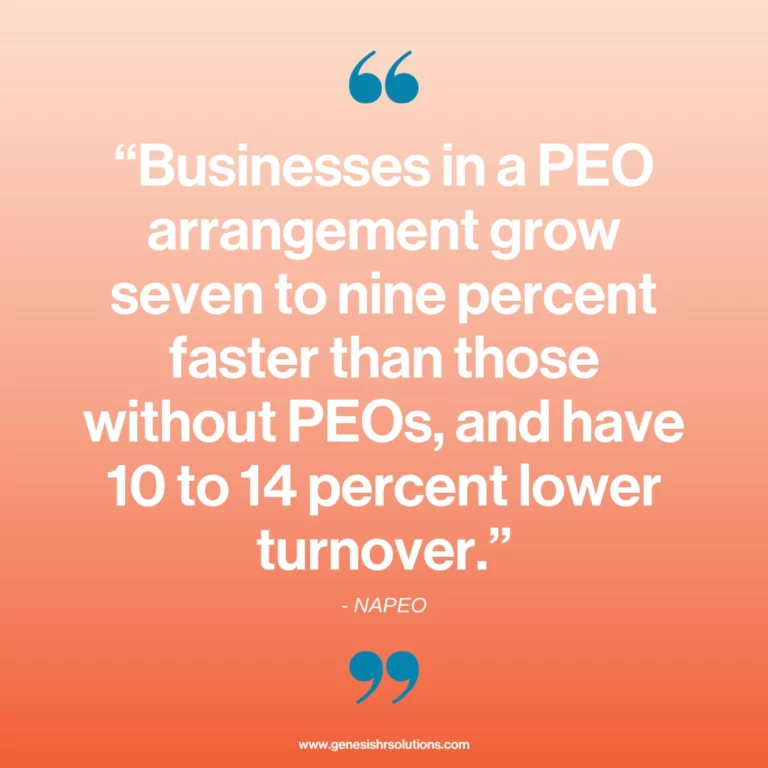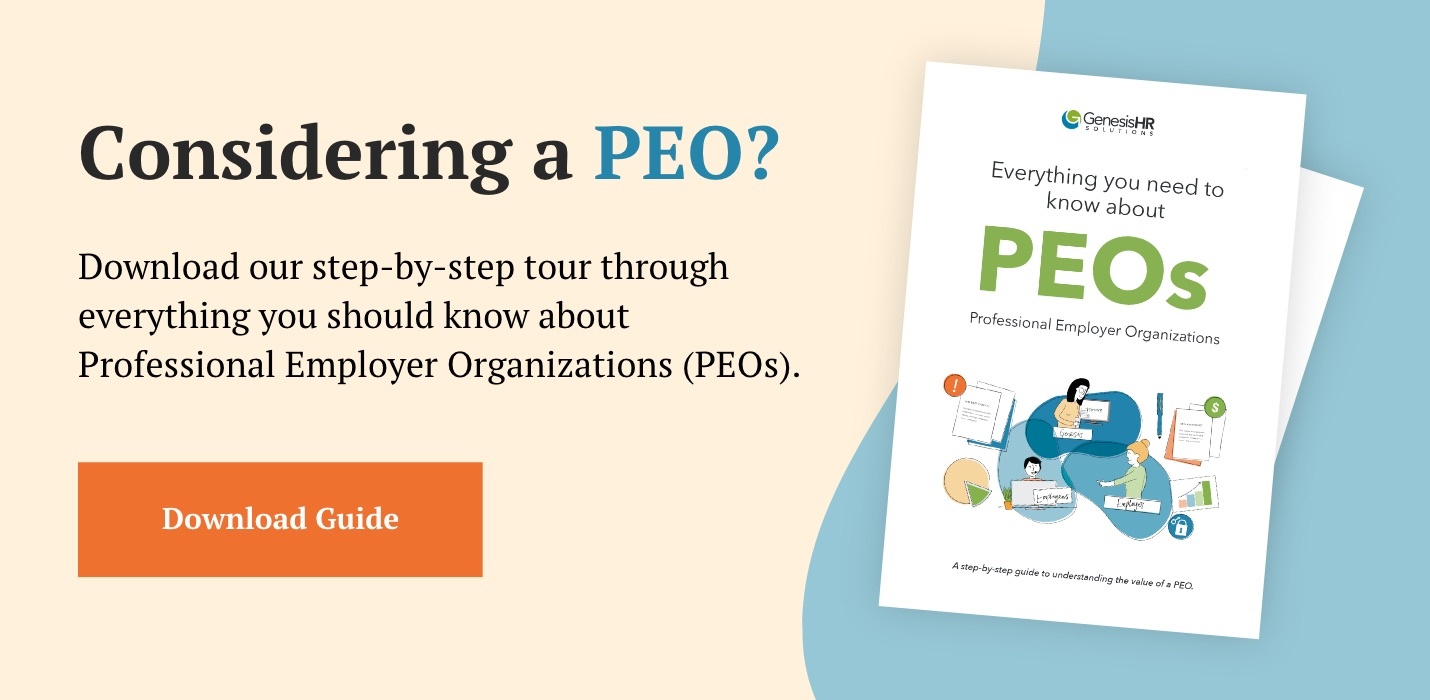- Co-employment is a contract and sharing of employer responsibilities between a PEO and its client, an employer.
- Benefits of the co-employment business model used by PEOs include giving client companies access to a broader spectrum of employee benefit plans, sharing employer risk, and shifting fiduciary liability of 401(k) plans to the PEO.
- Co-employment is not joint employment.
- Businesses in a PEO arrangement grow seven to nine percent faster than those without PEOs, and have 10 to 14 percent lower turnover. (NAPEO)
- This article is for leaders of small to midsize businesses and HR managers who are interested in learning what, exactly, a co-employment relationship is and how it’s related to partnership with a PEO.
Co-employment sits at the heart of the relationship between professional employer organizations (PEOs) and their clients. Here’s what a co-employment relationship is (and what it’s not) and what you can expect from one.
What is co-employment?
According to NAPEO, co-employment is the contractual allocation and sharing of certain employer responsibilities between a PEO and client. Co-employment is the business model used by PEOs—among other things, it gives client companies access to a broader spectrum of employee benefit plans, shares a variety of employer risk, and shifts fiduciary liability of 401(k) plans to the PEO.
In a co-employment relationship, each party is responsible for certain obligations of employment; they may also both share responsibility for other obligations and be “an” employer. However, neither party is “the” employer for all purposes. (NAPEO)
What is not co-employment?
Co-employment is not the same thing as joint employment.
Joint employment is defined as the following:
…a company will be deemed a “joint employer” with another company if it has “direct and immediate control” over another company’s employees. The factors that are considered in making this determination are whether the company that is receiving the benefit of the employees’ work (even if those employees are technically on another company’s payroll) (i) hires or otherwise selects the workers, or has input into the selection process; (ii) pays the workers or determines their compensation; (iii) directs the workers’ day to day activities, sets schedules or supervises performance; or (iv) has the authority to discipline the workers, enforce workplace rules or terminate the workers’ employment.
In short, if two or more companies exercise some control over the work or working conditions of an employee, those companies may all be considered to be “joint employers” under certain employment laws. (Joint Employer Liability — Are you At Risk?)
With co-employment, a PEO wouldn’t, for example, tell a client to hire a dozen more employees; their activities are limited to providing services around human resource management, not directing human resource actions.
Where does risk fall in the co-employment relationship?
With co-employment, risk is shared between the PEO and your company. Similarly, a PEO and the client share certain responsibilities, especially around employer compliance.
As a co-employer, the PEO provides information around state and federal compliance issues that impact you and your business. The PEO representative will communicate the requirements and in many cases provide guidance on how to meet those requirements. However, in some cases, it is up to you take the action to meet compliance. As a simple example, the PEO will likely provide the required state and federal labor law poster but it is up to you to post it in your worksite in an area visible to all employees.
Think of the shared risk as having ‘skin in the game’. Your PEO is going to do their best to guide you appropriately in order to mitigate (and minimize) your risk, and theirs.
Co-employment Relationship Benefits

For small business owners, a PEO’s co-employment could be the difference between reaching your growth goals and stagnating because you’re overloaded with administrative work. So what are the benefits of a co-employment relationship?
Businesses in a PEO arrangement grow seven to nine percent faster than those without PEOs, and have 10 to 14 percent lower turnover. (NAPEO)
Clients in a co-employment relationship are more likely to have greater retention of employees and greater growth: PEOs provide small businesses access to benefits and insurance (specifically health insurance) plans usually available only to larger employers.
Companies that partner with PEOs are 50% less likely to go out of business.
One of the biggest myths about a co-employment relationship is that partnering with a PEO means you will lose or give up control of your company. This isn’t true. Partnering in co-employment is exactly that—a partnership.
The PEO assumes some of the administrative burden of being an employer and that allows you to have a sharper focus on your business.
At GenesisHR, we take the time-consuming, stressful components of HR, benefits, and payroll off your plate so you can do what you’re good at. We help you accomplish more for your company—while you retain control of it.
PEOs also help you make sure you’re staying on the right side of legal issues.
Small to medium size companies that partner with a PEO are more competitive with larger companies.
A co-employment relationship helps small to mid-size businesses become more competitive with larger companies by providing access to a network of benefits they could not get on their own. PEOs can offer good benefits, health insurance, and more choices, which evens the playing field with the competition.
Want to know more about co-employment and PEOs?
Staffed by knowledgeable, experienced individuals, our PEO is an asset a single in-house hire can’t compete with. We’d love to explain how a PEO works and what co-employment could do for your company. Let’s schedule a call to discuss how GenesisHR Solutions can help relieve your organization of the burden of HR, payroll, benefits administration, and more.





